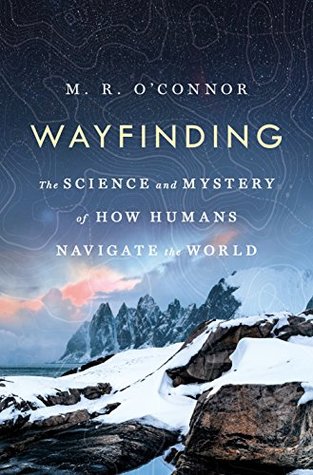More on this book
Kindle Notes & Highlights
Read between
October 24 - October 30, 2021
Because it is how we access the world and build consensus about reality, it is especially meaningful today when our attention is continually seduced downward to our devices and inward to our individualness. Wayfinding, I now think, is an activity capable of engaging with and attending to places and nourishing relationships and attachments to them.
Meanwhile, scientists who study childhood development increasingly see the ability to explore, play independently, and self-locomote as essential aspects of cognitive maturation, potentially spurring the vigor of memory and theory of mind. Yet children’s freedom of movement, from Japan to Australia to Europe to America, is increasingly circumscribed by risk avoidance and a lack of access to the outdoors.
“By using a GPS to find our way instead of clues available in the world itself, we devalue the experience of traveling anywhere,” he said.
“We want to go faster and faster because we don’t think anything is happening during that time,” he said. “One could put it quite politically: travel today is a condition of advanced capitalism. Time spent on an airplane is opportunity passed because you could be doing other things, like making money.” Ingold, who teaches at the University of Aberdeen in Scotland, has written extensively about the role of movement in human life, and he told me: “Life is a movement that carries on in real time, and it’s something to value.”
“The land does not change,” the narrator said. “You have beautiful things now but you should not depend on them. If you lost them tomorrow, could you live on the land? Could you hunt?”
“My father taught that when you get stuck, he asked a question. What are we going to do? In my mind I thought he was going to fix it, but instead he asked me. ‘What are you going to do?’ He knows he can fix it. He knows where he is. But he wants me to think so I can learn,” he said.
The British zoologist Robin Baker points out in his book Human Navigation and the Sixth Sense that one reason the scientific belief in a sixth sense lasted for so long is that by the nineteenth century, people in western Europe had so many aids to navigation, such as maps, compasses, place-names, roads, and road signs, that they themselves had forgotten there were other strategies for navigating. This forgetting is remarkable because, as Baker wrote, these modern inventions had only been available to the masses for three or four generations at most.
Landmarks are either few and far between or difficult to distinguish and impermeable, so legibility depends on sociocultural dimensions, the symbolic significance and meaning imparted to the landscape by the people who traverse it. What Aporta found is that certain routes for traveling across the land become favored over generations, and knowledge of these unmarked trails is passed down from person to person, family to family, community to community, not in the form of maps but as oral descriptions that are memorized.
Traveling along these routes was the way the Inuit engaged with the environment and maintained, nourished, and expanded their memoryscape. Spatial orientation researchers generally break human navigation strategies into two sorts. The first is route knowledge, an ability to construct a sequence of points, landmarks, and perspectives that make up a path from one place to another.
The second strategy is called survey knowledge: the traveler organizes space into a stable, maplike framework, in which every point or landmark has a two-dimensional relationship to every other point.
“Thinking at the highest level, at Piaget’s stage of formal operations,” writes anthropologist Charles Frake, “is not, as many have claimed, the hallmark of the modern, literate, scientific mind, but is, rather the hallmark of the human mind when confronted with a task sufficiently necessary, sufficiently challenging, and sufficiently clear in outcome.”
Indeed, without sustained opportunities for children to experience what could be described as exploratory wayfinding, some researchers believe that there would be costs to cognition and memory.
Dutch researchers found in 2014 that by the age of four, children who spent more time exploring had a higher capacity for spatial memory and a positive correlation to fluid intelligence—solving problems, identifying patterns, and logic.
exercise induces neurogenesis in the adult hippocampus,
Running, the researchers concluded, likely facilitates spatial information encoding by increasing the generation of neurons while also reorganizing neuron circuitry.
children who have higher levels of physical fitness have larger hippocampal sizes than those who are less active, indicating a relationship between aerobic exercise and the structure of preadolescent brains. Furthermore, those structural differences seem to impact function.


